True Ghost Stories: A Journey Through Hauntings
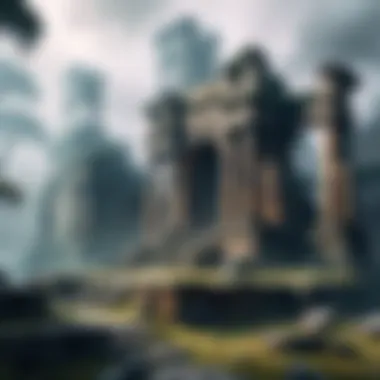
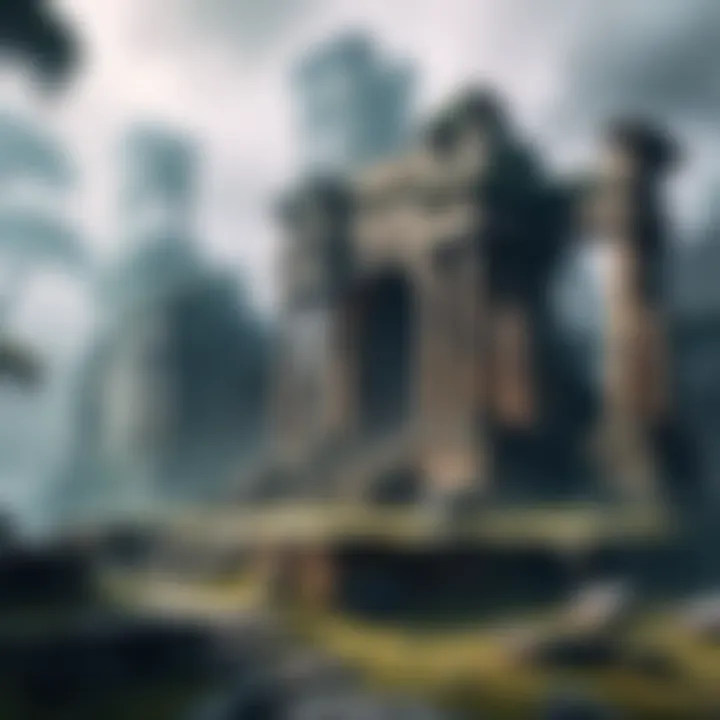
Intro
Ghost stories have a unique, haunting charm that transcends time and culture. These tales often serve as a mirror reflecting our deeper fears, societal beliefs, and cultural narratives. The allure lies not just in the tales themselves but in the emotions they evoke—curiosity mixed with a tinge of dread. Whether shared around a campfire or recounted in the cozy confines of a living room, these stories tap into our primal instincts, sparking wonder and possibly fear.
As we traverse the maze of true ghost stories, we will peel back the layers on historical accounts, delve into cultural interpretations, and examine the psychology behind hauntings. What drives the narratives about restless spirits? How have public perceptions shaped the way we view these chilling tales? This exploration aims to answer such questions, shedding light on the societal fears and fascinations that keep these stories alive.
Within this narrative, we will cover notable ghost stories that have marked their place in history, acknowledging the individuals and events that have become synonymous with the supernatural. Join us as we embark on this journey through time and culture, revealing the truths hidden within the shadows.
Technology Insights
Though the realm of ghosts might seem distant from the latest tech trends, there's a fascinating intersection where technology meets the paranormal. As we explore this budding field, we uncover how modern gadgets are shaping the way we investigate and interpret hauntings.
Latest Tech Trends
Today, paranormal investigators often utilize advanced tools that were unheard of a few decades ago. From electromagnetic field (EMF) meters to infrared cameras, these devices help enthusiasts capture anomalies that might signal ghostly presences. Furthermore, smartphone apps designed for ghost hunting, like Ghost Radar or Spirit Box, have surged in popularity. These applications, while some skeptical of their efficacy, offer a new way for tech-savvy individuals to engage with the world of spirits.
Innovation in Tech
Virtual reality (VR) is also making waves in the ghost story arena. Some developers have created immersive experiences, allowing users to step into haunted locations without leaving their homes. These VR experiences redefine how we approach ghost stories, offering an interactive platform for users to feel the chills without the risks associated with actual visits to purportedly haunted sites.
Product Reviews
If you’re looking to delve deeper into ghost hunting, consider investing in some essential tools:
- Ghost Meter EMF Radiation Detector: This handy gadget detects electromagnetic fields which some believe can indicate ghostly activities.
- Sony ICD-UX570 Digital Voice Recorder: Perfect for capturing EVPs (Electronic Voice Phenomena).
- FLIR One Gen 3 Thermal Imaging Camera: Great for spotting heat signatures that could hint at an unseen presence.
For a comprehensive overview of these tools and more, user reviews and discussions can be found on platforms like Reddit or Facebook, where communities share their experiences and insights about their ghost hunting adventures.
"Ghost stories are the collective memory of society’s fears and beliefs, shaped by time and culture."
In the next sections, we’ll dive into the cultural interpretations and historical accounts that have fed the fascination with ghost stories. From ancient folklore to modern narratives, these tales continue to captivate and perplex us.
Foreword to Ghost Lore
The topic of ghosts and hauntings has long fascinated humanity, bridging the realms of history, culture, and psychology. In this section, we explore the foundational aspects that shape our understanding of ghost lore. Ghosts, whether perceived as spirits of the deceased or manifestations of something more intangible, are woven into the fabric of nearly every culture around the world. Understanding the basics of what defines a ghost and the various forms of hauntings sets the stage for a deeper exploration of these eerie narratives throughout the article.
Defining Ghosts and Hauntings
When discussing ghosts, it’s essential first to ponder what we really mean by the term. Ghosts are often described as the spirits or souls of individuals who have departed this world. They might be linked to unfinished business, a traumatic death, or simply a strong attachment to a particular place.
Hauntings vary in manifestations, which can range from simple fleeting shadows to more intricate experiences like the sound of footsteps in an empty hallway. Some hauntings are believed to act as emotional echoes, replaying significant events from the past. Others might exhibit sentient characteristics, engaging with the living in seemingly conscious ways. This complexity introduces a rich tapestry of interpretations and theories surrounding the phenomenon, influencing how people react to these experiences.
For example, the term "haunting" itself can evoke images of flickering lights, cold drafts, or unsettling feelings. Each culture has its unique traits that contribute to the perception of what a ghost might be, making defining these entities a bit slippery.
This elusive nature of ghostly apparitions complicates efforts to categorize and explain them, inviting both scientific inquiry and supernatural speculation. Not surprisingly, the definitions can vary widely based on cultural beliefs and individual experiences.
Historical Context of Ghost Stories
Ghost stories have had a prominent place in history, serving various social functions from moral lessons to communal bonding experiences through fear and curiosity. The tales often reflect the fears and beliefs of the societies from which they emerge. For instance, in ancient Rome, spirits of ancestors were revered and expected to guide their descendants. In contrast, during the medieval period in Europe, ghost stories often reinforced the fear of damnation by illustrating the consequences of earthly misdeeds.
What’s fascinating is how these narratives evolved over centuries. In Victorian England, the popularity of ghost stories surged alongside an interest in spiritualism, leading to a plethora of literature filled with eerie encounters and spectral beings.
Hardly a year goes by without some new adaptation of these tales coming to life on stage or screen. Each retelling reflects the societal yearnings and fears surrounding death and the unknown, revealing deeper psychological dynamics at play.
In the modern context, ghost stories serve not only as entertainment but also as a commentary on contemporary anxieties regarding mortality and existence. They provide space for individuals to grapple with the idea of life beyond death. Thus, the historical context is not merely a backdrop but an insightful lens through which we can better understand the intricate relationship between ghost lore and its significance in human culture.
This exploration of defining ghosts and their historical underpinnings forms a crucial foundation for appreciating the cultural interpretations of these spectral narratives, which we will delve into in subsequent sections.
Cultural Interpretations of Ghosts
Understanding how different cultures perceive ghosts offers a glimpse into the varied human experience with the supernatural. Ghosts are not merely figures of folklore; they embody a culture’s fears, hopes, and beliefs about death and the afterlife. This section delves into how Western folklore, Eastern spiritual beliefs, and Indigenous perspectives each shape and inform society’s understanding of hauntings.
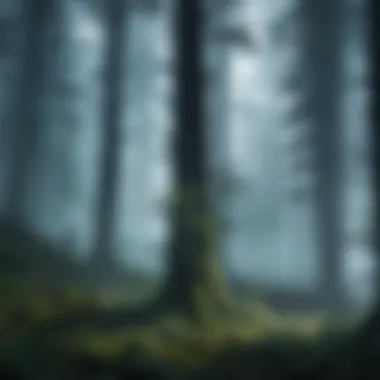

Ghosts in Western Folklore
In Western narratives, ghosts often take on a somewhat chilling persona, typically viewed as spirits of the deceased who have unresolved issues or unfinished business. The archetype of the tormented ghost is common, often portrayed in literature and film. Consider Charles Dickens’ A Christmas Carol, where the specter of Jacob Marley warns Ebenezer Scrooge about the consequences of a life devoid of compassion. This dichotomy between the living and the dead raises questions about morality and remembrance.
Unique to Western folklore is the concept of the haunted house. Why do places like the Winchester Mystery House or the Whaley House draw so much fascination? Because they tap into deep-seated cultural views. Haunted locations are often thought to be portals where the past lingers, inviting both thrill-seekers and skeptics alike. Often in these stories, the ghosts act as vessels that carry forward the burden of history.
- Key themes in Western ghost stories:
- Revenge or unfinished business: Ghosts seeking closure
- Moral lessons and reflections on human behavior: A reflection of societal values
- Fear of the unknown: Tapping into natural human instincts
Spiritual Beliefs in Eastern Cultures
In contrast, spiritual traditions in Eastern cultures often embrace a more holistic view of spirits and the afterlife. Here, ghosts might not represent a punishment but instead serve as intermediaries between worlds. For instance, in Chinese culture, the concept of ancestral spirits is prevalent. Festivals like Qingming, or Tomb Sweeping Day, illustrate this connection, where families honor their dead, believing they continue to impact the living’s fortunes.
The idea of reincarnation also plays a role. Rather than a permanent haunting, a spirit may pass through various incarnations. The notion of karma emphasizes the cyclical nature of life, leading individuals to approach death with acceptance rather than fear.
- Key aspects of Eastern beliefs:
- Reverence for ancestors: Ghosts as protectors or guides
- Influence of karma: A cyclical approach to life and death
- Interconnectedness of all beings: Spirit is part of a larger cosmic order
Indigenous Perspectives on Spirit Beings
Indigenous cultures often possess their unique interpretations of spirit beings, intertwining the natural world with the supernatural. Ghosts may be seen as guides or guardians, reflecting a worldview deeply embedded in the land and community. For instance, among Native American tribes, spirits of the ancestors walk beside the living, serving as a bridge to the past.
Stories of visitations from the spirit world may provide guidance or warnings. These stories emphasize respect for nature, the past, and the interconnectedness of all life.
It's important to understand that, in many Indigenous cultures, ghosts are not merely remnants of the deceased but living parts of a vibrant tradition that instructs and informs daily life.
- Important themes in Indigenous perspectives:
- Ancestors as guides: Learning from the past
- Nature and spirits: Respect for the environment and its inhabitants
- Integration of ancestors into daily life: Learning to coexist with spirits
As we peel back the layers of cultural interpretations surrounding ghosts, it’s evident that they play a multifaceted role in shaping our beliefs and interactions with the unseen. Far from mere myths, they reflect deeply held values and fears across cultures.
These lenses help to define our understanding of ghost stories, revealing how they serve not only as entertainment but as conduits for exploring our societal values, collective memories, and the mysteries of existence.
Famous Ghost Stories from History
The narratives of ghost stories from history serve as fascinating windows into the human psyche. They reveal not just tales of the haunted and the supernatural, but also the societal fears and beliefs that thrive within these accounts. The importance of these stories lies in their dual role as folklore and historical commentary, intertwining dread with cultural identity. By studying these ghostly tales, we gain insight into the various ways people have grappled with mortality, loss, and the unknown, while also crafting a shared sense of heritage.
The Legend of the Bell Witch
One of the most notorious ghost stories in American folklore is the legend of the Bell Witch, which originated in rural Tennessee during the early 19th century. The tale begins with John Bell, who, upon moving to his new farm, began experiencing odd disturbances. Reports of knockings, whispers, and eerie noises filled their everyday lives, culminating in more physical manifestations like glimpses of an apparition. The disturbance escalated, with the entity tormenting not only John but also his family, contributing to a communal atmosphere of fear.
Many explanations have been offered over the years, ranging from ghosts of vengeful spirits to folklore-based interpretations. Yet, the tale of the Bell Witch serves as more than just a simple ghost story. It dives deep into themes of family, community, and the rural experience of life in early America, illuminating how deeply people's beliefs influence their realities. The Bell Witch has solidified its place in pop culture, inspiring countless adaptations and investigations, maintaining its status as a fascinating case study for historians and paranormal enthusiasts alike.
The Haunting of the Amityville House
The Amityville Horror, as it's popularly known, echoes throughout horror history for its sensational headline-making story. This began in 1974 when Ronald DeFeo Jr. murdered his family in their home, followed by the Lutz family moving in shortly after. What transpired within those walls swiftly rippled out across media channels, igniting fervent public interest. The Lutzes reported bizarre occurrences including strange sounds, apparitions, and unexplained phenomena that soon spiraled into a contentious debate about truth versus fabrication.
The Amityville House embodies a myriad of themes, playing heavily on the fear of desecrated spaces and haunted histories. It raises questions about trauma, mental health, and societal accountability, challenging the divide between believer and skeptic. The various adaptations in literature and film have only served to embellish the story, cementing Amityville’s legacy in the canon of horror. While some contest the validity of the Lutz’s accounts, there’s little doubt on how these events have captured imaginations and ignited discussions about morality, evil, and the supernatural.
The Ghost of Anne Boleyn
Anne Boleyn, the ill-fated second wife of King Henry VIII, is often hailed as one of history’s most tragic figures. Her execution in 1536 marked a pivotal moment in English history, leading to the establishment of the Church of England. Legends have it that Anne's spirit haunts the Tower of London where she met her grim fate. Sightings of her apparition, often described wearing a distinctive gown, have been reported for centuries.
The significance of Anne Boleyn's ghost story transcends the mere tale of a haunting; it encapsulates the essence of revenge, love, and the quest for power. History has romanticized her figure, painting her as a victim of political machinations rather than just a queen. Her spectral appearances have not only fed the public's fascination but also spurred debates about historical narrative manipulation and the nature of legacies left behind.
"The intertwining of Anne's life and death reflects humanity’s pursuit for understanding beyond the grave."
Each of these ghost stories serves as a cultural artifact that informs us about societal norms, fears, and beliefs. They resonate on multiple levels, providing both entertainment and contemplative avenues for understanding our past.
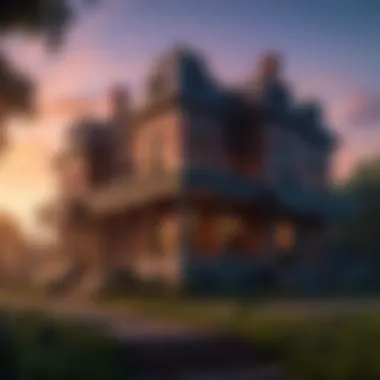

Psychological Aspects of Ghost Encounters
The psychological dimensions of ghost encounters offer a fascinating window into human experience. They shine a light on our fears, hopes, and the sometimes unexplainable things we face. By examining how our minds interpret these supernatural occurrences, we gain valuable insights into not just the stories themselves but the individuals behind them. This exploration is essential because it enriches our understanding of how people respond to the unknown and the profound emotions tied to ghostly tales.
The Role of Fear in Haunting Experiences
Fear is a powerful emotion that permeates human life. When it comes to ghost encounters, fear often takes center stage, coloring people's experiences in profound ways. In various cultures, ghosts can embody collective fears - whether it is fear of death, the unknown, or unresolved emotional connections. A classic example is the notion of the restless spirit. This idea isn't just about the ghost itself but about what that specter represents: a life unlived, a tragedy unresolved.
When individuals recount ghostly encounters, their narratives are often steeped in fear. They describe unexplainable sounds or chilling sensations, grounding their experiences in the palpable dread that accompanies such phenomena. Furthermore, fear can catalyze heightened senses, making people more attuned to their surroundings in the perceived presence of a ghost. This kind of heightened awareness can lead one to misinterpret benign occurrences – a creaking floorboard or a drafty breeze might feel much more sinister in a moment of heightened anxiety.
Cognitive Biases and Perceptions of the Supernatural
Cognitive biases play a significant role in shaping how we perceive supernatural encounters. Confirmation bias, in particular, influences how people interpret their experiences. Many individuals, upon encountering something unusual, tend to recall and emphasize details that match their preconceived beliefs about the supernatural. For instance, if someone firmly believes in ghosts, they are more likely to interpret a sudden cold sensation or flickering lights as evidence of a ghostly presence.
Moreover, availability heuristic can skew perceptions, causing people to judge the likelihood of events based on what readily comes to mind. If someone has recently heard of ghost sightings or watched a horror film, they may subconsciously link any unexplained event to their recent exposure. This is not just idle speculation; it's a cognitive mechanism at play, underscoring how readily our minds leap to conclusions when faced with the strange.
The Impact of Trauma on Ghost Sightings
Trauma is yet another lens through which ghost encounters can be understood. Many individuals who experience significant loss or trauma report perceiving or interacting with spirits of the deceased. It’s as if the brain, in its struggle to grapple with the magnitude of grief, reaches out for signs that loved ones are still present, resulting in experiences that feel undeniably real.
For example, a person who has lost a family member may sense their presence in moments of distress or during pivotal life events. Such experiences can manifest as vivid dreams, fleeting sensations, or even heartfelt conversations that, while intangible, serve as conduits for unresolved emotions. Scholars suggest that these encounters may assist individuals in their healing process, allowing them to maintain a connection with those they've lost.
"Ghost encounters reflect more than the supernatural; they embody the complex tapestry of human emotion, fear, and memory."
Understanding the psychological aspects of ghost stories reveals the layers of meaning imbued in these accounts. They are not merely tales of the eerie and inexplicable, but rich narratives that tell us about our very human responses to fear, loss, and the unknown.
Documented Encounters of Ghostly Figures
The exploration of documented encounters with ghostly figures serves as a critical piece of the puzzle in understanding the broader landscape of ghost stories. This section aims to dissect the significance and value these accounts hold, especially when one seeks to bridge the gap between anecdotal narratives and more substantial evidence. Such encounters often form the backbone of paranormal studies, where both believers and skeptics alike strive to make sense of the unseen.
This documentation is essential as it presents tangible evidence that people across the globe have reported extraordinary experiences. From haunted houses to dark alleyways where shadows flicker just beyond human sight, personal accounts provide a glimpse into a world that many shy away from yet can't help but be curious about. The importance lies not just in the stories themselves, but in the implications these accounts have on cultural and social perceptions of ghosts.
"The realm of spirits serves as a mirror reflecting the human experience: fears, hopes, and unanswered questions about life and death."
Personal Testimonials in Paranormal Studies
The anecdotal testimonials provide a rich texture to the discourse around ghostly encounters. They are not merely stories told around a campfire but constitute a body of evidence that builds a cultural narrative. Individuals recounting their chilling encounters often share common threads, such as feelings of anxiety or a sense of being watched. These accounts can range from subtle, almost benign winks from the other side to experiences that leave individuals shaken to their core.
- Emotional Connection: Each personal story reveals a deep-seated emotional connection to the experience, whether fear, intrigue, or even loss.
- Cultural Insights: Testimonials can shed light on societal beliefs and fears, illustrating how different cultures interpret ghostly encounters.
Listeners or readers often find themselves asking: Are these testimonies pure fabrication, or do they offer glimpses into a world beyond the visible? This question fuels the ongoing dialogue about the supernatural, making personal testimonials invaluable.
Analysis of Video and Audio Evidence
While personal stories offer compelling narratives, the analysis of video and audio evidence elevates the discussion to a more investigative level. In recent years, technological advances have allowed more comprehensive scrutiny of ghost sightings, with amateur and professional paranormal investigators alike utilizing equipment like infrared cameras and electromagnetic field (EMF) meters.
- Authenticity Checks: Rigorous analyses of recorded material can help identify genuine anomalies versus common technological malfunctions.
- Interpretation Nuances: Understanding the context in which evidence is gathered is critical. Sounds in an empty house could easily be attributed to settling structures rather than spectral presences.
Ultimately, the significance of video and audio evidence lies in its ability to provide a tangible form of documentation that may validate or challenge personal accounts. This data aids in constructing a fuller picture of paranormal phenomena.
Investigations by Paranormal Societies
Investigative efforts by various paranormal societies play a pivotal role in the documentation of ghostly encounters. These organizations often approach investigations with a blend of skepticism and curiosity that can lead to fruitful explorations of the unexplained. Noteworthy is how these societies navigate the fine line between belief and scientific inquiry.
- Methodologies Employed: Each society has its techniques, from ghost hunts with sensitive equipment to interviews with witnesses. These methodologies vary, yet they all aim to uncover potential explanations for hauntings.
- Community Involvement: Many societies actively engage local communities in their investigations, fostering a sense of shared experience and collaborative discovery regarding the supernatural.
Modern Depictions of Ghost Stories
In today’s society, ghost stories are far from just bedtime tales. The way they are portrayed has evolved significantly, reflecting not only changing cultural sensitivities but also the influence of technology. These modern depictions serve as a cultural mirror, revealing collective fears, curiosities, and societal values. As audiences, we latch onto these narratives, often finding in them a comfortable blend of reality and fiction. They provoke thought, raise questions, and sometimes even instill fear or adventure.
Ghosts in Literature and Film
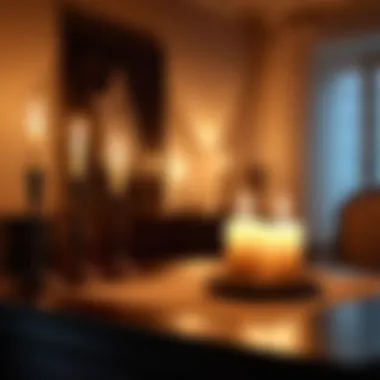

From Mary Shelley’s Frankenstein to Stephen King’s The Shining, ghosts in literature have taken various forms, often serving to explore deep existential themes. In modern literature, ghostly figures appear not merely as hauntings but as complex characters that push beyond the realm of horror into exploring human emotions and societal issues. For instance, in Lincoln in the Bardo by George Saunders, ghosts serve as reflections of grief and yearning. This thematic richness transcends mere scares.
In film, classic depictions have transformed. The shift from horror-centric narratives to family-centered tales—like Pixar’s Coco—illustrates this evolution. Instead of only warning against the dangers of the afterlife, contemporary films explore relationships and legacies, prompting viewers to reconsider how ghosts represent the memories left behind and the connections we maintain. The ghosts aren’t simply agents of fear but can illuminate aspects of the human experience.
Television Shows on Hauntings
Television has birthed an entire genre dedicated to the paranormal, which consistently draws audiences. Shows like Ghost Hunters and The Haunting of Hill House blend fact with fiction, exploring real-life haunted locations while also building intricate narratives. This format often invites viewers to question the validity of the supernatural while keeping them on the edge of their seats.
These series frequently weave interviews and historical context, providing authenticity to the scares. There's an element of connection when viewers tune in, as they often discuss episodes online, sharing their theories on forums and social media platforms. Ghost-hunting antics and dramatic reenactments, therefore, become part of the cultural lexicon. They inspire curiosity and even community, drawing people together to share experiences and insights about the unexplained.
Social Media’s Influence on Ghost Narratives
In recent years, the rise of social media has reshaped how ghost stories are told and consumed. Platforms like YouTube and TikTok have given rise to creators who share personal paranormal encounters. Users, often just like you and me, recount their ghostly interactions, spurred by a desire to connect with a wider audience. They often do this in bite-sized clips, making the haunting more relatable and immediate.
Social media also serves as a vehicle for storytelling, turning the once solitary activity of reading ghost stories into a communal experience. Threads on Reddit, for instance, are full of personal anecdotes surrounding hauntings that ignite discussions about shared experiences.
"The supernatural doesn't just belong in a book or a movie; it finds its place in our daily lives and interactions."
Additionally, hashtags like #GhostStories and #HauntedPlaces lead to viral sensations that encapsulate modern fears and fascinations with the ethereal. In doing so, they craft contemporary folklore that can transcend borders.
Through these mediums, ghosts have not only survived but thrived in crafting narratives that capture public imagination and speak to communal fears, realities, and hopes. They offer a bridge between past traditions and modern implications, ensuring that discussions around the supernatural remain as captivating as ever.
Ghost Tourism and Cultural Impact
Ghost tourism has emerged as a notable phenomenon within the travel industry. It intertwines the allure of the supernatural with the rich histories of haunted sites, drawing visitors from all walks of life. Understanding the cultural impact of ghost tourism is essential, as it showcases how societies grapple with their past and present through the lens of the paranormal.
Haunted Locations and Their Histories
Walking through haunted locations is akin to browsing through history's attic — each ghost story is a thread in the fabric of time. Locations like the Eastern State Penitentiary in Philadelphia, or Hampton Court Palace in England, are steeped in the stories of those who once walked their halls. Each site comes with its own history, often marked by tragedy, mystery, or social upheaval. For instance, the Tower of London is not just a historic monument; it is a place where countless souls met grisly fates, and their stories continue to echo through the ages. Visitors often find themselves entranced not just by the possibility of a ghostly encounter, but by the deeper connections they form with the history that permeates these spaces.
Economic Aspects of Ghost Tourism
From a financial standpoint, ghost tourism fuels local economies and revitalizes communities. Cities that embrace their haunted heritage often see a surge in visitors, eager to learn about the eerie tales associated with these locales. Investments in tours, merchandise, and themed events can provide a substantial boost. For example, Savannah, Georgia has capitalized on its ghostly reputation by offering ghost tours that feature haunted hotels and graveyards, thereby creating jobs and generating revenue.
Moreover, ghost festivals and haunted houses have become sources of seasonal income for many towns, particularly around Halloween. Not only does this create a vibrant economic environment, but it also fosters a sense of community as locals band together to share their stories and keep the chains of tradition alive.
The Ethics of Ghost Tourism
While ghost tourism can be economically beneficial, it raises ethical questions. The allure of a haunted site may sometimes overshadow the respect needed for tragic historical events. For instance, when touring former battlegrounds or locations of unspeakable suffering, there’s an imperative to tread thoughtfully and respectfully.
The challenge is balancing profit with integrity. Tour operators should aim to educate visitors about the history underlying ghost stories, rather than merely exploiting sensational aspects for entertainment. Involving local historians and cultural representatives in the storytelling process can also ensure narratives are shared respectfully.
The key lies in ensuring ghost tourism honors the memories of those who have come before us, fostering both a sense of wonder and reverence.
In sum, ghost tourism serves as a bridge between the past and the present, intertwining culture, economy, and ethics in a way that compels reflection on the significance of hauntings, both literal and metaphorical. Through exploring these facets, we can appreciate not just the thrills of ghostly adventures, but also their implications on culture and community.
Ending: The Enduring Allure of Ghost Stories
Ghost stories have a magnetic pull that intrigues both the curious and the skeptical alike. It’s a tapestry woven through time, connecting generations with threads of fear, wonder, and cultural significance. The allure of these tales extends beyond mere entertainment; they are reflective of deep-seated societal fears and beliefs, showcasing how humanity grapples with the unknown.
Reflection on Historical and Personal Accounts
When we dive into historical and personal ghost stories, it's like peeling back the layers of human experience. These narratives often carry significant weight. Each account serves as an echo from the past, revealing insights into the minds and cultures of those who lived before us. A great example is the spooky lore surrounding the Tower of London, where many have reported seeing apparitions of historical figures like Anne Boleyn. This not only highlights that ghost stories often have a foundation firmly planted in actual events but also showcases our never-ending fascination with history itself.
Moreover, personal testimonials act as proof that the supernatural experience is not confined to the dusty pages of folklore. Many people recount uncanny events that leave them questioning reality itself. These stories resonate on an emotional level, showing us that whether or not one believes in ghosts, the experience of encountering something unexplainable can be profoundly life-altering.
The Future of Ghost Narratives in Society
As society evolves, so too do our ghost stories. Technological advancements are reshaping how these narratives are told. Nowadays, you can find ghost hunters armed with smartphones and sophisticated gear, capturing proof of the unseen. This shift also influences how we perceive these tales. For instance, internet forums like Reddit teem with modern ghostly encounters, allowing for real-time storytelling that connects people across vast distances.
The future may also see a blending of traditional ghost lore with cutting-edge virtual reality experiences, where users might walk through haunted houses or interact with digital apparitions. This could redefine not just how stories are shared, but how deeply they affect us, blurring the line between reality and the supernatural.
To sum it up, the enduring charm of ghost stories speaks to an inherent part of what it means to be human. They challenge our understanding of life, death, and everything in between. In a fast-paced world fixated on technology and science, these narratives assert that the unexplained continues to hold value, making us ponder our origins, our fears, and our beliefs about what may lie beyond our physical existence.
"Ghost stories serve not only to entertain but to connect us with the very roots of our humanity."
The enduring nature of ghost tales is proof that as long as we roam the earth, searching for answers and grappling with the mysteries of life, these stories will remain an intrinsic part of our cultural landscape.







